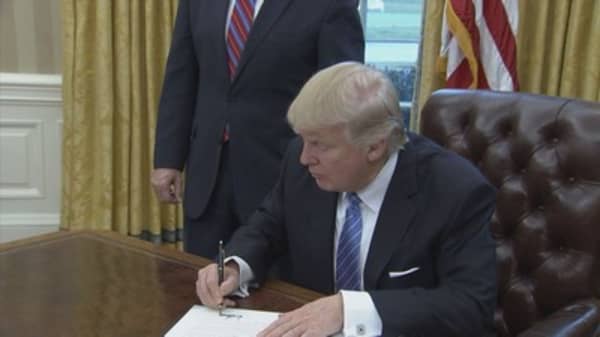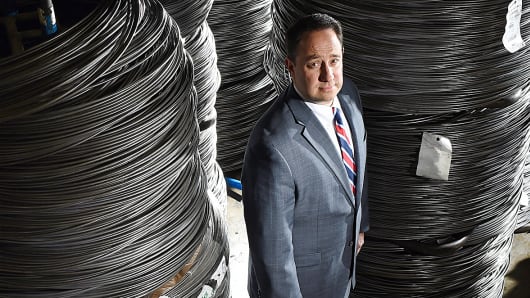When he signed the executive order formally scrapping a trade deal with 11 Pacific Rim countries, President Donald Trump proclaimed the move a "great thing for the American worker."
But a chorus of trade experts and economists this week have argued that the pulling out of the 12-nation Trans-Pacific Partnership will have exactly the opposite impact.
"Virtually all economic analyses of the proposed TPP … provided empirical arguments that the TPP would raise U.S. workers' income, both for highly educated and less educated workers," according to Jeffrey Bergstrand, finance professor at the University of Notre Dame and a former Federal Reserve economist.
Even TPP's most ardent supporters concede that it had flaws; some, for example, argued that it didn't go far enough in protecting intellectual property of U.S. companies, protecting worker rights or cutting red tape that restricts American-made products.
But scrapping the deal outright will leave American workers worse off, according to trade experts like Bergstrand.
Maintaining higher U.S. tariffs on Asian products will increase prices for American consumers, they contend. And without the benefit of lower trade barriers to Asian markets, U.S. companies will have a harder time competing with other countries as they try to boost U.S exports to the rapidly growing TPP economies.
Losing out on that growth potential "may leave the U.S. economy worse off than it otherwise would have been," according to Doug Lippoldt, a trade economist at HSBC Global Research.
Trump's campaign promises to renegotiate or scrap global trade deals like the TPP resonated with American voters based on the president's assertions that free trade has destroyed millions of American jobs and depressed wages.
"We must protect our borders from the ravages of other countries making our products, stealing our companies and destroying our jobs," he said in his gloomy Inauguration speech last week.
But simply taking a tough stance on trade won't help Trump fulfill his pledge to create more high-paying factory jobs in the U.S. That's because millions of manufacturing jobs have been lost to automation, not trade deals.
Offshoring once played an important factor. Since manufacturing employment peaked in 1979 at nearly 20 million, some 8 million of those jobs have been lost to automation and cheaper foreign labor markets. Those losses accelerated after the 2001 recession, when competition from China surged, according to MIT researchers, who estimate some 2.0 million to 2.4 million jobs left for China between 1999 and 2011.
But while the level of U.S. manufacturing employment has fallen by roughly a third, overall manufacturing output has doubled, thanks to a surge in productivity brought by increased automation, better supply chain management and other efficiency improvements. Those upgrades aren't going away.
As a result, U.S. manufacturers are able to make more of their product with fewer workers. While improvements in productivity have slowed in recent years, those decades of efficiency upgrades aren't going away.






